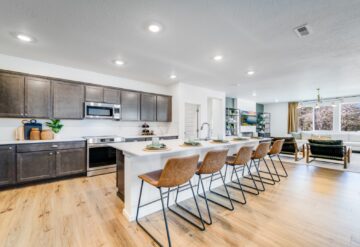The defining characteristics of first-time homebuyers are ever-changing, and so are the types of homes they desire. This article from Cody Fuller, Economic Analyst at Zillow, looks into recent data to outline the characteristics that define today’s first-time homebuyers.
The role of first-time homebuyers in the real estate market has remained remarkably constant – and hugely important – over the years. But while the role of first-time buyers hasn’t changed, the defining characteristics of first-time buyers, and what they’re looking for in a first home, is constantly evolving.
First-time buyers are critical in the real estate food chain, purchasing the homes occupied by slightly older families, and allowing those more mature families to sell their home and move up. And when first-time buyers leave rental housing for homeownership, they help ease rental demand, making it easier for their younger brethren to get started.
First-time homebuyers today are typically older, spend more time renting prior to buying and are less likely to be married than in prior years. Interestingly, they earn roughly the same amount they always have.
But while their income hasn’t risen much, first-time homebuyers’ tastes have. Both the price and percentile (the share of homes more or less expensive than those typically sought by first-timers) of homes purchased by first-time buyers have risen – homes now bought by first-time buyers cost about $140,000, up from $113,000 in the years immediately prior to the millennium. As a result, the value of a typical home bought by first-time buyers is closer to a middle-of-the-road home than a more stereotypical entry-level home.
And at the same time as the home value equation is changing, the type of home sought by first-time buyers is also changing: First-time buyers are increasingly purchasing condominiums, at the expense of sales of more traditional single-family homes. The share of condos purchased by first-time buyers has risen to 42%, from 28% in 2001.




